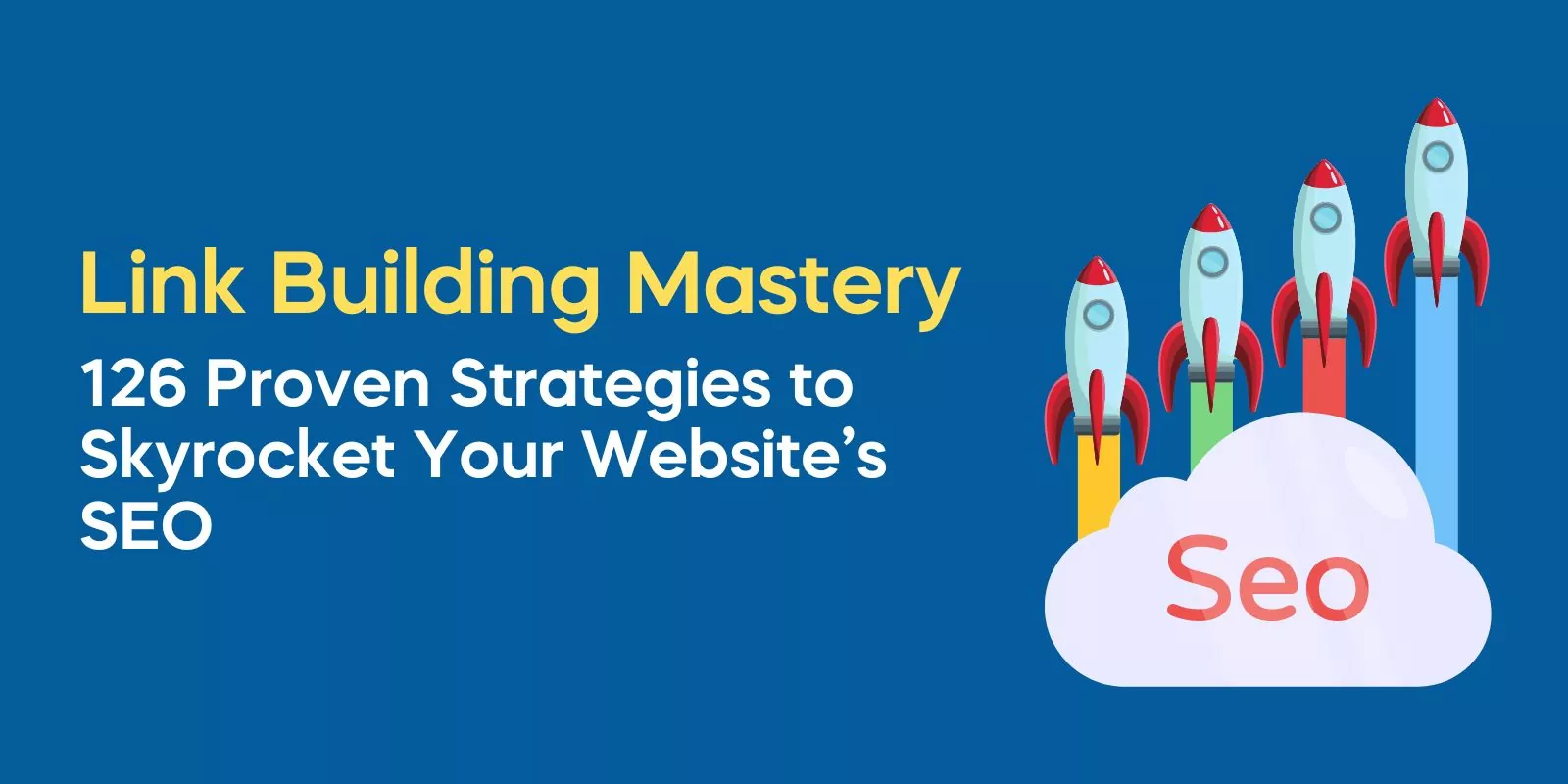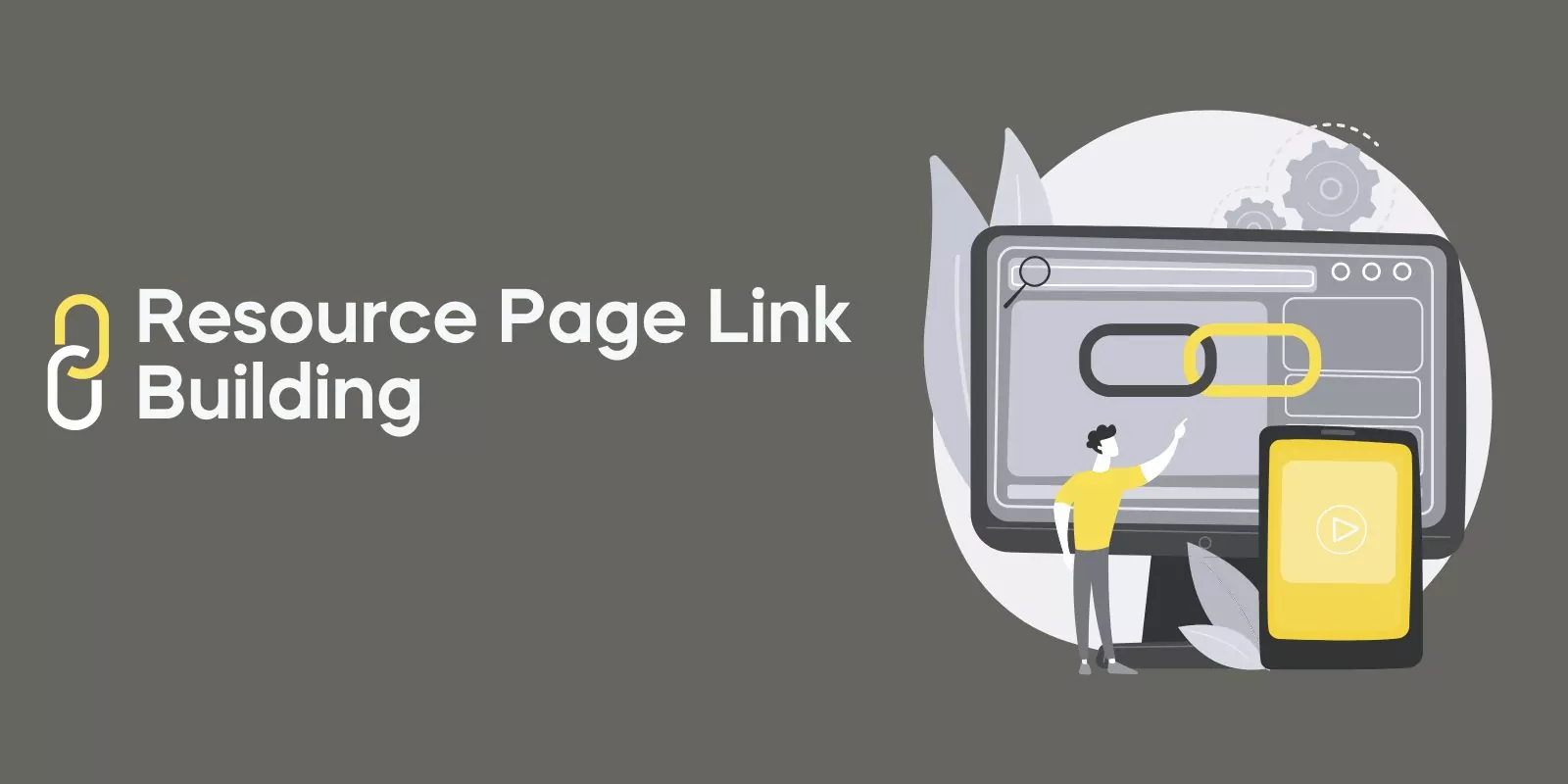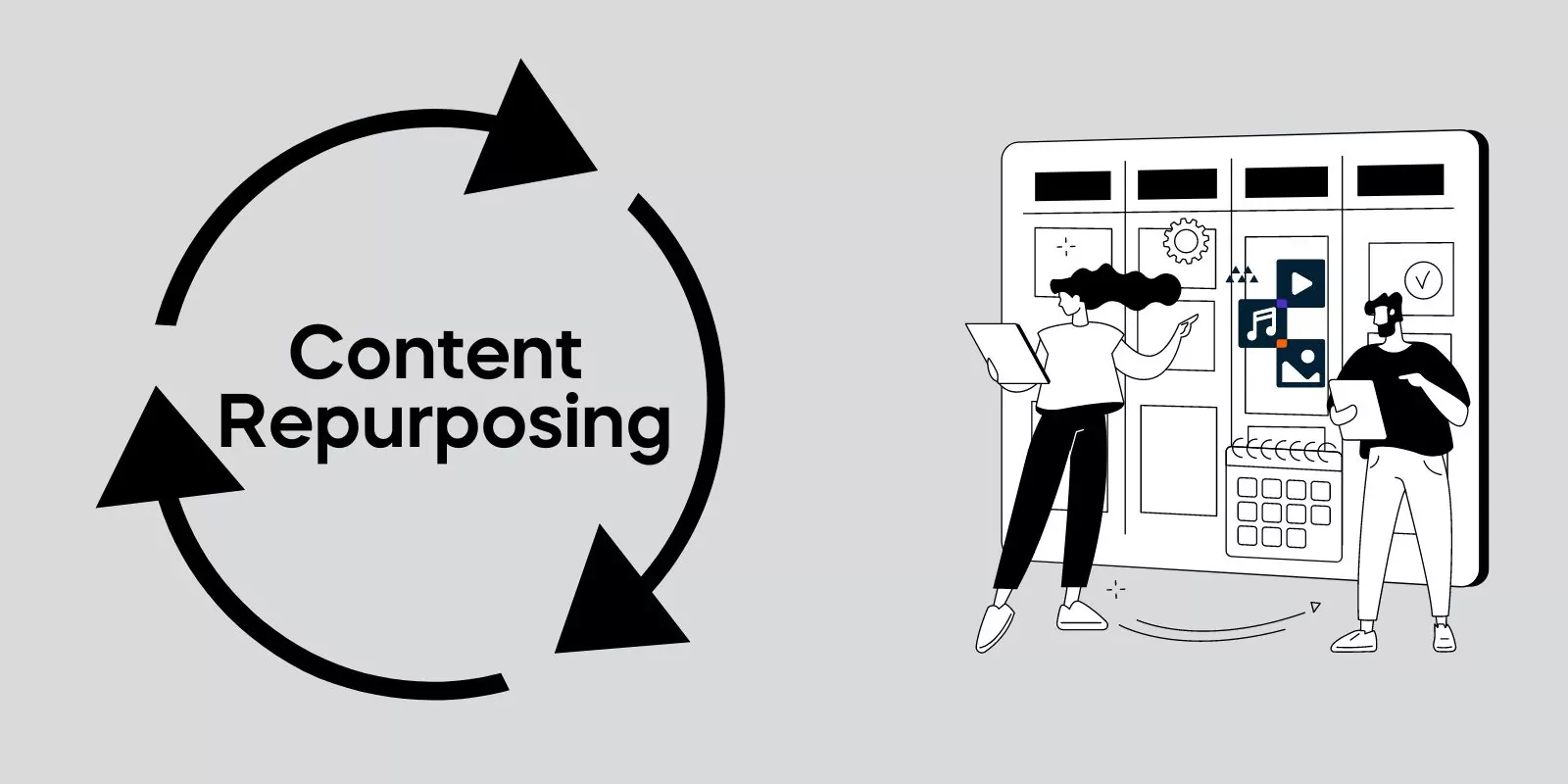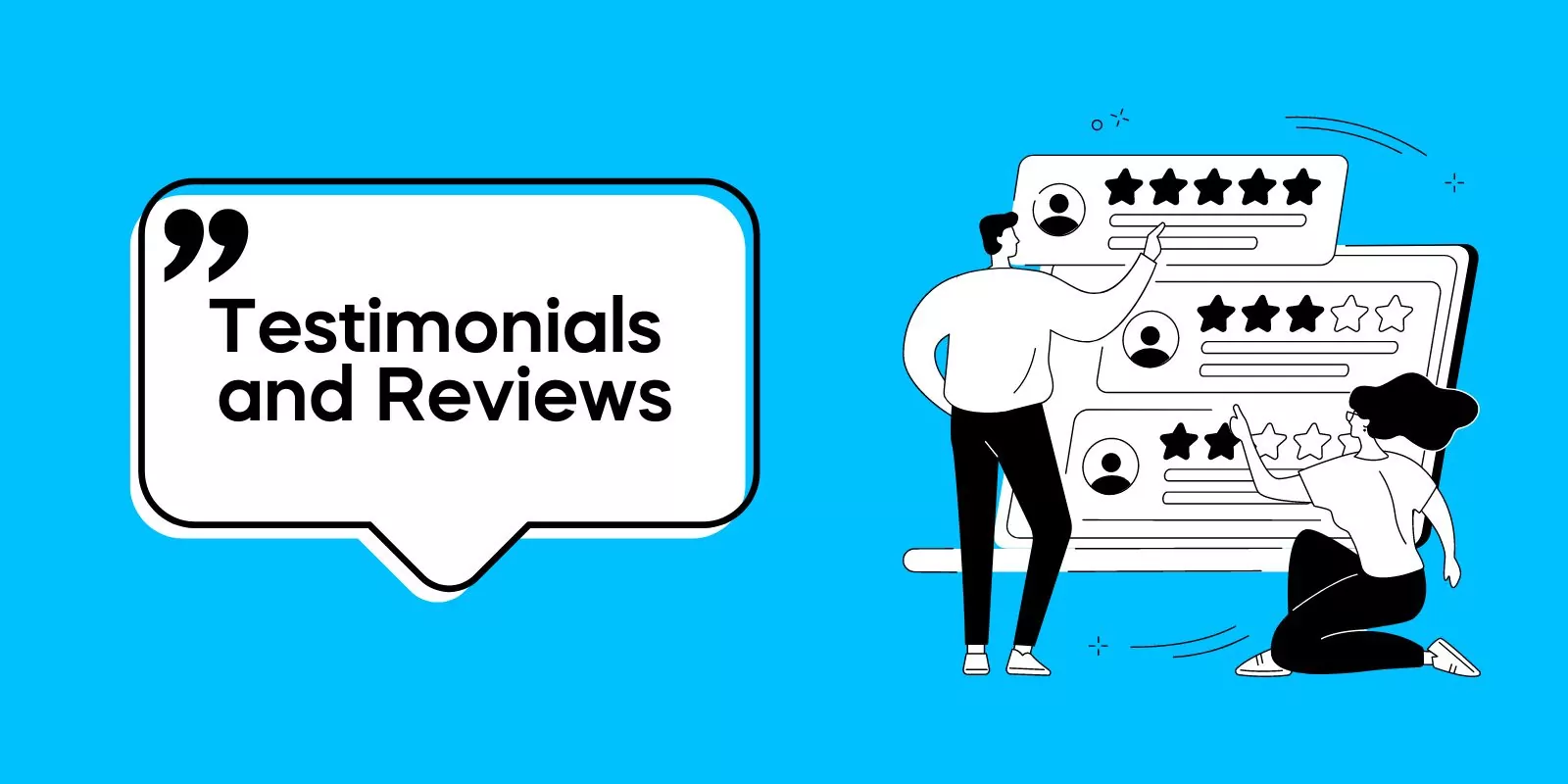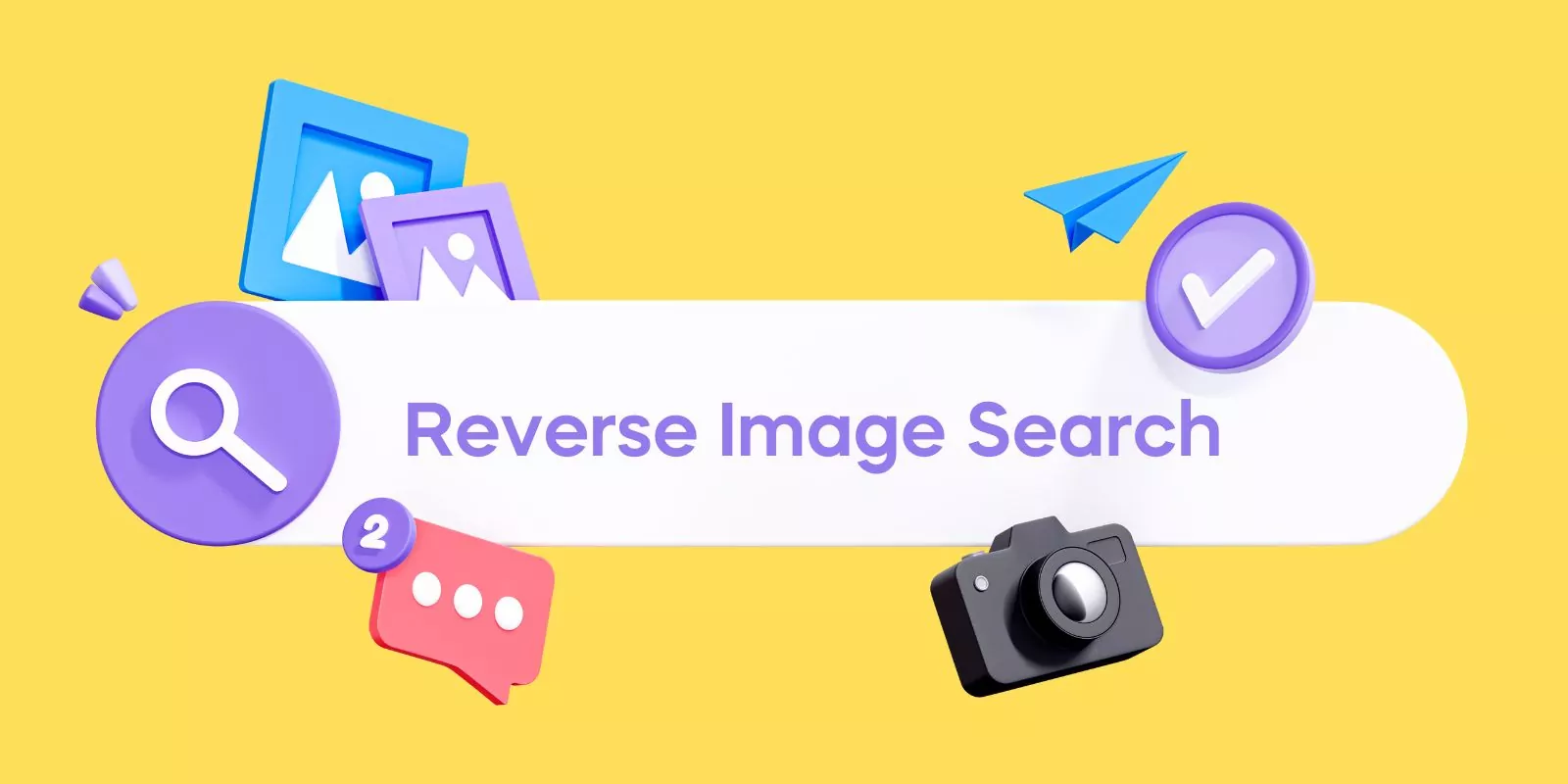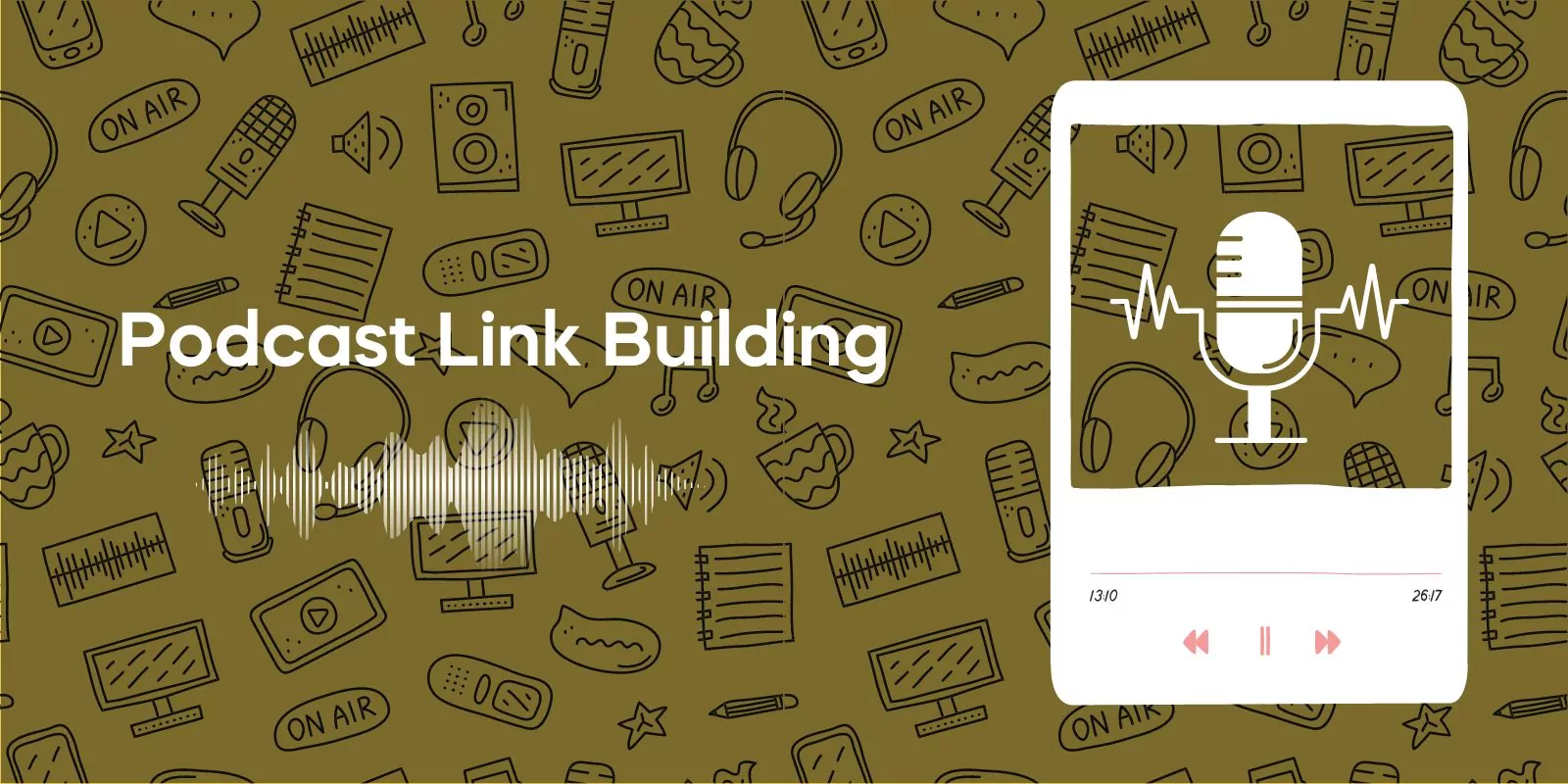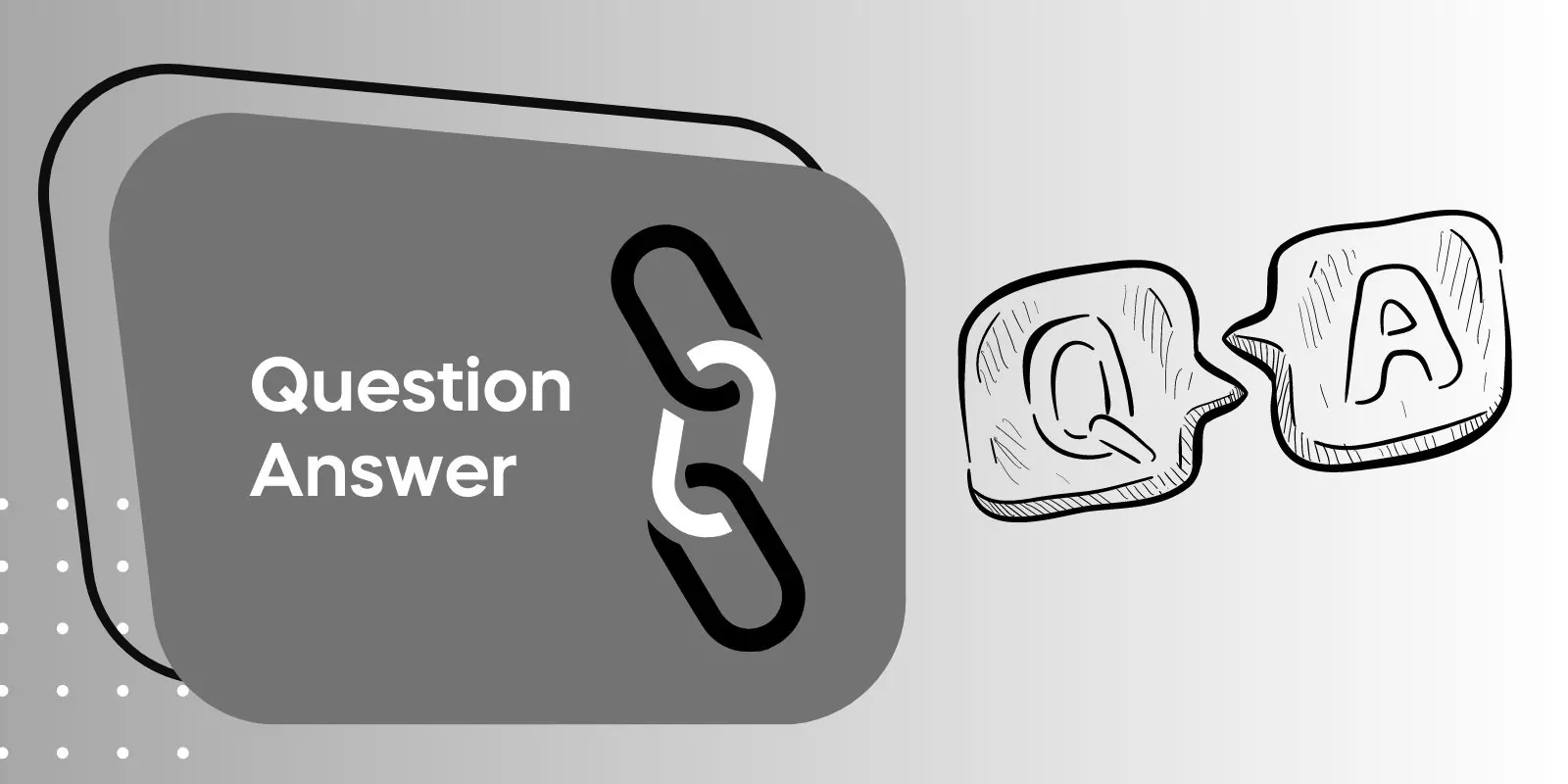In this comprehensive blog post, I’ll be breaking down 18 distinct link building strategies, providing you with 7 actionable tips in each section – that’s a whopping 126 link building techniques for you to implement.
By putting even just a handful of these strategies to work, I’m confident that your website rankings will skyrocket. Why? Because acquiring high-quality links is the cornerstone of any thriving SEO strategy.
So, without further ado, let’s dive in…
Broken Link Building
Broken link building is one of my favorite link building strategies, and for a good reason. It’s a win-win for both you and the website owner.
You help them fix a broken link, and in return, you get a high-quality backlink to your website.
Did you know that 91% of web pages don’t get organic traffic from Google, mainly due to a lack of backlinks?
When I first started with broken link building, I was amazed by the number of opportunities out there. To begin, you can use tools like Ahrefs, SEMrush, or Screaming Frog to find broken links on relevant websites.
Once you’ve identified a broken link, create (or repurpose) content that can replace it. This is where your expertise in your niche comes in handy.
After you’ve prepared your replacement content, it’s time to reach out to the site owner. A well-crafted email can go a long way in making a positive impression.
Politely inform them about the broken link and offer your content as a replacement. I’ve found that most site owners appreciate the heads up and are willing to link to your content, especially if it’s high quality.
Remember, the key to success in broken link building is persistence and patience. It’s not uncommon to encounter website owners who don’t respond or aren’t interested in linking to your content. Don’t get discouraged. Keep refining your outreach strategy and searching for more opportunities.
In fact, 71% of pages have at least one broken internal link. So, the opportunities are out there! Just stay consistent and focused on providing value to the website owners you contact.
Broken link building can significantly improve your website’s SEO and help you establish relationships with other websites in your niche.
7 Actionable Broken Link Building Tips:
- Use tools like Ahrefs, SEMrush, or Screaming Frog to find broken links on relevant websites.
- Create (or repurpose) content that can replace the broken link.
- Reach out to the site owner, informing them about the broken link and offering your content as a replacement.
- Be persistent and patient, as not every website owner will respond or be interested in your offer.
- Keep refining your outreach strategy to maximize your chances of success.
- Focus on providing value to the website owners you contact.
- Don’t get discouraged by setbacks – there are plenty of opportunities out there!
Guest Blogging
Guest blogging has been a staple of link building for years and remains an effective strategy to this day.
By creating valuable content for other websites in your niche, you can earn high-quality backlinks and establish yourself as an authority in your industry.
According to a survey by SEO Tribunal, 60% of blogs write 1-5 guest posts per month, which shows just how popular this strategy is.
I’ve personally experienced significant SEO improvements through guest blogging. Not only does it help with link building, but it also exposes your content to a wider audience and generates referral traffic.
To get started, make a list of authoritative websites in your niche that accept guest posts. Then, brainstorm content ideas that will resonate with their audience and pitch your ideas to the site owner or editor.
Remember, the key to successful guest blogging is to provide genuine value to the website’s audience. Focus on creating high-quality, informative content that their readers will find helpful and engaging.
Over time, you’ll build relationships with website owners and editors, leading to more guest blogging opportunities and backlinks.
Did you know that 62.96% of readers perceive blogs with multiple authors to be more credible?
This means that being a guest blogger can boost not only your SEO but also your reputation as an expert in your field.
7 Actionable Guest Blogging Tips:
- Identify authoritative websites in your niche that accept guest posts.
- Brainstorm content ideas that will resonate with their audience.
- Pitch your ideas to the site owner or editor, emphasizing the value you can provide.
- Create high-quality, informative content that their readers will find helpful and engaging.
- Be patient and persistent – it may take time to establish relationships with website owners and editors.
- Focus on providing genuine value to the website’s audience, rather than just seeking backlinks.
- Use guest blogging to establish yourself as an authority in your niche, boosting both your SEO and credibility.
Resource Page Link Building
Resource pages are curated lists of helpful links and resources on a specific topic, making them a goldmine for link building opportunities.
I’ve personally had great success with this strategy, as website owners are always looking for valuable resources to share with their audience.
To get started, find resource pages in your niche by searching for terms like “resources,” “links,” or “useful websites” combined with your target keywords.
Once you’ve found relevant resource pages, evaluate whether your content would be a valuable addition. If so, reach out to the site owner and pitch your resource.
Be sure to explain why it would be beneficial for their audience and how it stands out from other resources on their page.
For instance, pages with high-quality, comprehensive content are more likely to be included on resource pages. According to a study by Backlinko, long-form content gets an average of 77.2% more links than short articles.
7 Actionable Resource Page Link Building Tips:
- Find resource pages in your niche by searching for terms like “resources,” “links,” or “useful websites” combined with your target keywords.
- Evaluate whether your content would be a valuable addition to the resource page.
- Reach out to the site owner and pitch your resource, explaining why it would be beneficial for their audience.
- Focus on creating high-quality, comprehensive content that stands out from other resources.
- Be patient and persistent – not all site owners will respond or be interested in including your resource.
- Continue searching for more resource pages and opportunities to build links.
- Consider creating your own resource page to attract links and provide value to your audience.
Skyscraper Technique
The Skyscraper Technique is a link building strategy that involves creating exceptional content that surpasses the current top-ranking content for a specific keyword or topic.
By producing the best content available, you increase the likelihood of other websites linking to your content as a valuable resource.
I’ve used the Skyscraper Technique several times and found it to be an effective way to gain high-quality backlinks. One study found that using the Skyscraper Technique can increase organic traffic by up to 110%.
To implement this strategy, start by identifying a popular piece of content in your niche with a high number of backlinks.
Next, create a piece of content that is more comprehensive, engaging, and visually appealing than the original. Finally, reach out to websites that have linked to the original content and present your improved version, asking them to consider linking to your content instead.
7 Actionable Skyscraper Technique Tips:
- Identify a popular piece of content in your niche with a high number of backlinks.
- Create a piece of content that is more comprehensive, engaging, and visually appealing than the original.
- Reach out to websites that have linked to the original content, presenting your improved version.
- Emphasize the benefits of linking to your content, such as providing their audience with more value and up-to-date information.
- Be polite and professional in your outreach – building relationships with other websites can lead to future link building opportunities.
- Monitor the results of your Skyscraper Technique efforts and adjust your approach as needed.
- Continue researching popular content in your niche to identify more opportunities for the Skyscraper Technique.
Influencer Outreach
Influencer outreach involves connecting with prominent individuals or organizations in your niche and collaborating with them to create content or share your content with their audience. This can result in high-quality backlinks and increased exposure for your brand.
I’ve found that collaborating with influencers has helped boost my content’s reach and generate valuable backlinks.
In fact, 89% of marketers say that the ROI from influencer marketing is comparable to or better than other marketing channels.
To get started with influencer outreach, identify influencers in your niche who have a large following or who are highly respected in the industry.
Next, reach out to these influencers with a personalized message, explaining why your content would be valuable to their audience.
Be prepared to offer something in return, such as sharing their content on your own platforms or collaborating on a project together.
7 Actionable Influencer Outreach Tips:
- Identify influencers in your niche with a large following or high industry respect.
- Research the influencer’s content and audience to determine if your content would be a good fit.
- Reach out to influencers with a personalized message, explaining the value your content would provide to their audience.
- Offer something in return for their support, such as sharing their content or collaborating on a project.
- Be patient and persistent – building relationships with influencers can take time.
- Monitor the results of your influencer outreach efforts and adjust your approach as needed.
- Continue researching and connecting with new influencers to expand your network and increase your chances of gaining high-quality backlinks.
Content Repurposing
Content repurposing involves transforming your existing content into different formats or mediums, such as turning a blog post into an infographic or a video.
This can help you reach a wider audience and generate additional backlinks by appealing to different content preferences.
I’ve repurposed content in various formats and found that it not only saves time but also helps to attract more backlinks. According to a study by HubSpot, content that includes visuals receives 94% more total views and is 40 times more likely to be shared on social media.
To repurpose your content, start by identifying popular or evergreen content on your website that could be transformed into a different format.
Next, create the new content format, ensuring it maintains the same level of quality as the original. Finally, share the repurposed content on relevant platforms and reach out to websites that might be interested in linking to or sharing your new content format.
7 Actionable Content Repurposing Tips:
- Identify popular or evergreen content on your website that could be repurposed into a different format.
- Create the new content format, maintaining the same level of quality as the original.
- Share the repurposed content on relevant platforms, such as social media, forums, or content-sharing websites.
- Reach out to websites that might be interested in linking to or sharing your repurposed content.
- Monitor the results of your content repurposing efforts and adjust your approach as needed.
- Continuously look for opportunities to repurpose your existing content to maximize its potential for attracting backlinks.
- Experiment with different content formats to see which ones generate the most engagement and backlinks.
Award-Winning
Sales Funnel & Website Expert
Ready for Revenue – Not Just “Traffic”?
- Websites that Work: Clean, fast, built to convert – no design fluff.
- Funnels that Sell for You: Step-by-step paths that turn clicks into paying customers.
- SEO That Hunts Buyers: Show up exactly when prospects reach for their wallets.
Excellent5-star rating over 700 reviews
Resource Link Building
Resource link building involves creating valuable content that serves as a comprehensive resource on a specific topic, then reaching out to websites that have resource pages or link lists and requesting a link to your resource.
In my experience, resource link building is an effective way to gain high-quality backlinks from authoritative websites. One study found that resource pages have a 56% success rate for earning links.
To create a valuable resource, start by identifying a topic that is highly relevant to your target audience and has the potential to attract backlinks. Next, conduct in-depth research and create a comprehensive guide or resource that covers the topic extensively.
Finally, reach out to websites that have resource pages or link lists related to your topic and request a link to your resource.
7 Actionable Resource Link Building Tips:
- Identify a highly relevant topic for your target audience with the potential to attract backlinks.
- Conduct in-depth research and create a comprehensive guide or resource covering the topic extensively.
- Reach out to websites with resource pages or link lists related to your topic, requesting a link to your resource.
- Emphasize the value and benefits of linking to your resource, such as providing their audience with comprehensive information on the topic.
- Be polite and professional in your outreach, as building relationships with other websites can lead to future link building opportunities.
- Monitor the results of your resource link building efforts and adjust your approach as needed.
- Continuously research new topics and update your existing resources to maximize their potential for attracting backlinks.
Unlinked Brand Mentions
Unlinked brand mentions occur when another website mentions your brand or content without linking to your website. By reaching out to these websites and requesting a link, you can capitalize on the existing mention and gain a high-quality backlink.
I’ve found that leveraging unlinked brand mentions is a low-effort yet effective way to build links. According to Moz, 91% of online content gets no organic traffic from Google, making it crucial to capitalize on any brand mention.
To identify unlinked brand mentions, set up Google Alerts or use a tool like Mention to monitor mentions of your brand or content. When you find an unlinked mention, reach out to the website owner and politely request that they add a link to your website.
7 Actionable Unlinked Brand Mentions Tips:
- Set up Google Alerts or use a tool like Mention to monitor mentions of your brand or content.
- Identify unlinked brand mentions on other websites.
- Reach out to the website owner and politely request that they add a link to your website.
- Explain the benefits of linking to your website, such as providing their audience with additional information or context.
- Be persistent but respectful in your outreach – some website owners may not respond immediately or may require multiple follow-ups.
- Keep track of your unlinked brand mentions and the results of your outreach efforts to refine your approach over time.
- Continuously monitor your brand mentions to identify new opportunities for gaining high-quality backlinks.
Testimonials and Reviews
Providing testimonials and reviews for products or services you’ve used can be an excellent way to earn backlinks. Many companies feature customer testimonials on their website and often include a link back to the reviewer’s website.
In my experience, providing testimonials and reviews has not only helped me gain high-quality backlinks but also build relationships with other businesses in my niche. According to BrightLocal, 82% of consumers read online reviews for local businesses.
To leverage testimonials and reviews for link building, identify products or services you’ve used and genuinely appreciate.
Reach out to the company and offer to provide a testimonial or review, mentioning your willingness to include a link to your website. Be sure to provide a well-written, honest, and detailed review that adds value for potential customers.
7 Actionable Testimonials and Reviews Tips:
- Identify products or services you’ve used and genuinely appreciate.
- Reach out to the company and offer to provide a testimonial or review, mentioning your willingness to include a link to your website.
- Write a well-written, honest, and detailed review that adds value for potential customers.
- Ensure your review is unique and not overly promotional – authenticity is key for effective testimonials.
- Maintain relationships with the companies you provide testimonials for, as they may be more likely to link to your content in the future.
- Monitor the results of your testimonials and reviews link building efforts and adjust your approach as needed.
- Continuously look for opportunities to provide testimonials and reviews for other products or services in your niche.
Infographics and Visual Content
Creating infographics and visual content is an effective way to earn backlinks, as visually appealing content is more likely to be shared and linked to by other websites. As mentioned earlier, content that includes visuals receives 94% more total views and is 40 times more likely to be shared on social media.
To create engaging infographics and visual content, start by identifying a topic that is relevant to your target audience and has the potential to attract backlinks.
Next, conduct research and gather data to include in your visual content. Finally, design an attractive and informative infographic or visual that effectively communicates the information.
7 Actionable Infographics and Visual Content Tips:
- Identify a topic relevant to your target audience with the potential to attract backlinks.
- Conduct research and gather data to include in your visual content.
- Design an attractive and informative infographic or visual that effectively communicates the information.
- Share your visual content on social media, content-sharing websites, and relevant online communities.
- Reach out to websites that have shared similar content in the past and ask if they would be interested in sharing or linking to your visual content.
- Monitor the results of your infographics and visual content link building efforts and adjust your approach as needed.
- Continuously research new topics and update your existing visual content to maximize their potential for attracting backlinks.
Local Link Building
Local link building focuses on earning backlinks from websites that are specific to your geographic area or target audience. This strategy is particularly beneficial for local businesses or organizations that want to improve their local search engine rankings.
In my experience, local link building can help build strong relationships within your community and attract targeted traffic. According to Google, 46% of searches have a local intent.
To implement local link building, start by identifying local websites, such as local news outlets, business directories, or community organizations, that might be interested in linking to your content.
Reach out to these websites and pitch your content, emphasizing the value it provides to their local audience.
7 Actionable Local Link Building Tips:
- Identify local websites, such as local news outlets, business directories, or community organizations, that might be interested in linking to your content.
- Research the local website’s content and audience to ensure your content is a good fit.
- Reach out to the local websites with a personalized message, explaining the value your content provides to their local audience.
- Offer something in return for their support, such as promoting their content or collaborating on a local project.
- Be patient and persistent – building relationships with local websites can take time.
- Monitor the results of your local link building efforts and adjust your approach as needed.
- Continuously research and connect with new local websites to expand your network and increase your chances of gaining high-quality local backlinks.
Reverse Image Search Link Building
Reverse image search link building involves using Google’s reverse image search to find websites that have used your images without providing proper attribution or linking back to your site. By reaching out to these websites and requesting a link, you can capitalize on the existing usage of your images and gain high-quality backlinks.
In my experience, reverse image search link building is a low-effort yet effective way to build links.
According to a study by MDG Advertising, content featuring compelling images averages 94% more total views than content without images.
To implement reverse image search link building, start by uploading your images to Google’s reverse image search and identifying websites that have used your images without proper attribution.
Reach out to these websites and politely request that they add a link to your website.
7 Actionable Reverse Image Search Link Building Tips:
- Upload your images to Google’s reverse image search to identify websites that have used your images without proper attribution.
- Make a list of websites that have used your images without providing a link back to your site.
- Reach out to the website owners and politely request that they add a link to your website.
- Explain the benefits of linking to your website, such as providing their audience with additional information or context.
- Be persistent but respectful in your outreach – some website owners may not respond immediately or may require multiple follow-ups.
- Keep track of your reverse image search link building efforts and refine your approach over time.
- Continuously monitor your image usage to identify new opportunities for gaining high-quality backlinks.
Content Syndication
Content syndication involves republishing your content on third-party websites, with a link back to the original source.
This strategy can help you reach a wider audience and gain additional backlinks by leveraging the reach of established platforms.
In my experience, content syndication can effectively boost your content’s reach and generate valuable backlinks. According to a study by Nielsen, 27% of online users discover new websites through content syndication.
To implement content syndication, start by identifying reputable websites or platforms in your niche that accept syndicated content. Reach out to these websites and pitch your content for syndication, ensuring that they provide a link back to the original source.
7 Actionable Content Syndication Tips:
- Identify reputable websites or platforms in your niche that accept syndicated content.
- Review the content syndication guidelines for each platform to ensure your content is a good fit.
- Reach out to the websites and pitch your content for syndication, highlighting the value it provides to their audience.
- Ensure the syndicated content includes a link back to the original source on your website.
- Monitor the performance of your syndicated content to measure its impact on traffic and backlinks.
- Continuously research and connect with new content syndication partners to expand your reach and increase your chances of gaining high-quality backlinks.
- Consider syndicating different types of content, such as blog posts, infographics, or videos, to determine which formats generate the most engagement and backlinks.
Co-creation and Collaborative Content
Co-creation and collaborative content involve working with other individuals, businesses, or organizations to produce content that benefits all parties involved.
This strategy can help you build relationships, expand your reach, and earn high-quality backlinks from your collaborators’ websites.
In my experience, co-creation and collaborative content can result in unique and valuable content that attracts backlinks and generates engagement.
According to a study by the Content Marketing Institute, 75% of marketers use some form of collaborative content.
To implement co-creation and collaborative content, start by identifying potential collaborators in your niche. Reach out to these individuals or organizations and propose a content collaboration that benefits both parties.
Once the content is created, ensure that all parties involved link to the final product from their respective websites.
7 Actionable Co-creation and Collaborative Content Tips:
- Identify potential collaborators in your niche, such as influencers, industry experts, or complementary businesses.
- Reach out to your potential collaborators and propose a content collaboration that benefits both parties.
- Develop a clear plan for the content collaboration, including deadlines, responsibilities, and promotion strategies.
- Create unique and valuable collaborative content that appeals to the target audience of all parties involved.
- Ensure that all collaborators link to the final product from their respective websites.
- Promote the collaborative content across all relevant platforms, including social media, email newsletters, and content-sharing websites.
- Monitor the results of your co-creation and collaborative content efforts and adjust your approach as needed.
Podcast Link Building
Leveraging podcasts for link building is an effective and often overlooked strategy. By appearing as a guest on relevant podcasts or even starting your own, you can gain valuable backlinks and establish yourself as an expert in your field.
In fact, around 32% of the U.S. population listens to podcasts monthly, showcasing the massive potential audience you can reach through this medium.
Research shows that podcast listeners are more likely to follow brands on social media, increasing the chances of gaining backlinks.
7 Actionable Podcast Link Building Tips:
- Research and identify podcasts in your niche.
- Reach out to podcast hosts and offer to be a guest, providing valuable insights and expertise.
- Create a unique and engaging story or topic for the podcast episode.
- Promote the podcast episode on your website and social media channels.
- Offer to create a show notes page for the podcast host, which will include a backlink to your website.
- Start your own podcast and invite industry experts to participate, creating a network of backlinks and relationships.
- Encourage listeners to leave reviews and share the episode, increasing its visibility and attracting more backlinks.
Ego Bait Link Building
Ego bait link building is a clever strategy that involves creating content that appeals to the ego of industry experts or influencers, with the goal of earning backlinks from them.
This technique can be highly effective when done correctly. In fact, influencer marketing can generate up to 11 times the ROI of traditional advertising.
7 Actionable Ego Bait Link Building Tips:
- Create high-quality, well-researched content that features industry experts or influencers.
- Reach out to the featured experts, letting them know that they’ve been included in your content and politely asking for a share or a backlink.
- Develop a list of influential people in your niche, and create content specifically tailored to them.
- Offer exclusive interviews or insights from industry leaders, making your content more valuable and link-worthy.
- Organize and publish expert round-up posts, collecting valuable insights from multiple experts in one piece of content.
- Create awards or recognition lists that highlight the achievements of influencers in your niche.
- Develop infographics or other visually appealing content that showcases the expertise of featured individuals.
As many as 94% of marketers who use influencer marketing believe it is effective, so incorporating this strategy into your link building efforts can yield significant results.
Link Building through Testimonials
Providing testimonials to other businesses or products is a mutually beneficial strategy for gaining backlinks.
Not only does your testimonial add credibility to the product or service you’re endorsing, but it also offers an opportunity for you to gain a high-quality backlink from the website where your testimonial is published. In fact, 72% of consumers say that positive testimonials make them trust a business more.
7 Actionable Link Building through Testimonials Tips:
- Identify products or services you’ve used and genuinely believe in.
- Reach out to the business offering the product or service, expressing your interest in providing a testimonial.
- Craft a well-written and honest testimonial that highlights the benefits of the product or service.
- Include a link to your website within your testimonial, so that it serves as a backlink.
- Offer to provide a headshot or logo to accompany the testimonial, increasing the chances of it being published.
- Monitor the website where your testimonial is published, ensuring that the backlink remains active.
- Share your testimonial on social media, tagging the business and potentially gaining additional backlinks from their followers.
Building Links through Q&A Platforms
Participating in Q&A platforms like Quora, Reddit, or industry-specific forums can help you build high-quality backlinks while showcasing your expertise.
In fact, Quora alone has over 300 million monthly active users, making it a valuable platform for reaching your target audience and building your online presence.
7 Actionable Building Links through Q&A Platforms Tips:
- Identify relevant platforms or forums in your niche and create a profile.
- Regularly participate in discussions and provide valuable answers to users’ questions.
- Include a link to your website or a relevant piece of content within your answers when appropriate.
- Monitor your profile for new questions or follow-up comments, ensuring you remain an active participant.
- Offer insights based on your personal experience or industry expertise, making your answers more valuable and link-worthy.
- Build relationships with other users or industry experts, increasing the likelihood of them sharing your content or linking to your website.
- Track the success of your efforts on each platform, adjusting your strategy as needed to maximize the potential for link building.
Remember that Q&A platforms are communities, and engaging with users in a respectful and helpful manner is crucial for success in link building through this method.
Frequently Asked Questions
What is link building?
Link building is a search engine optimization (SEO) strategy that involves acquiring hyperlinks from other websites to your own. Each of these links, also known as “backlinks,” act as a signal to search engines that your site contains valuable content. Over time, a robust link-building strategy can help improve your website’s search ranking and overall visibility.
How does link building work?
Link building works by increasing the number of high-quality inbound links to a webpage, thereby improving its search engine rankings. When another reputable site links to yours, search engines view this as a sign of trust. The more high-quality links you have, the higher you’re likely to rank in search engine results.
How do you start link building?
To start link building, first ensure your site has high-quality, valuable content that others will want to link to. Then, identify reputable sites within your industry that you can target for backlinks. Outreach methods may include guest blogging, content promotion, broken link building, or collaborations. Additionally, it’s essential to continually monitor and analyze your backlink profile to ensure your strategy is effective.
What is the difference between link building and backlinking?
There’s a subtle difference between link building and backlinking. Link building refers to the overall process of acquiring links to your site, which includes various strategies such as content creation, outreach, and public relations. On the other hand, backlinking specifically refers to the act of getting other sites to link back to your site.
What is link building primarily used for?
Link building is primarily used to improve a website’s SEO. When search engines crawl the web, they look at how pages are interconnected through links. When a high-quality site links to your page, it’s essentially “vouching” for your content, which can help improve your site’s credibility and ranking on search engine result pages (SERPs).
How long does it take to see results from link building?
The time it takes to see results from link building can vary depending on many factors, including the quality of your links and the competitiveness of your keywords. Typically, you may start seeing the initial impact in about 3 to 6 months, but it can take up to a year or more to achieve substantial SEO improvements.
What is link building in layman terms?
In layman terms, link building is like getting votes of confidence from other websites. Each link back to your site is like another site saying, “We trust this content enough to link to it.” Just like in a popularity contest, the site with the most “votes” (quality links) has a better chance of winning (ranking higher).
How much does link building cost?
The cost of link building can vary widely based on the scope and complexity of your campaign. It can range from a few hundred dollars for a basic campaign, to several thousand dollars for a more comprehensive, ongoing strategy. Keep in mind that the most cost-effective approach often involves a balance of time, effort, and financial investment.
What are the types of link building?
The types of link building include editorial links (those gained naturally when sites link to your content), manual outreach links (acquired through contacting bloggers or sites to link to your content), and self-created links (through blog comments, forums, or even your own blog).
What are some link building techniques?
Some popular link building techniques include content marketing (creating valuable content that naturally attracts links), guest blogging (writing content for other sites to gain a link), broken link building (finding broken links on other sites and suggesting they link to your content instead), and influencer outreach (connecting with influencers in your industry for promotion and link opportunities).
What does link building do?
Link building increases the number of high-quality inbound links to your website, which search engines perceive as a validation of the trustworthiness of your site. This can result in higher rankings on search engine results pages, more traffic, and increased visibility.
What are link building methods?
Common link building methods include content creation & promotion, building relationships with influencers or bloggers, guest posting, social media promotion, and leveraging business directories or local listings. These methods aim to get other websites to link back to your site.
What is link building content?
Link building content is content that is specifically created with the intent of attracting backlinks from other websites. This can include blog posts, white papers, infographics, guides, and any other content that provides significant value to readers and is worthy of being linked to.
How to link build for SEO?
To link build for SEO, start by creating valuable, high-quality content. Reach out to relevant websites, bloggers, and influencers to promote your content. Participate in guest blogging opportunities, leverage social media, and use email marketing to spread the word about your content. Monitor your link profile regularly to understand the effectiveness of your link building efforts.
Conclusion
In conclusion, link building is a critical aspect of any successful SEO strategy. By implementing these 29 proven strategies, you’ll be well on your way to skyrocketing your website’s SEO and driving more organic traffic to your site.
Remember to focus on creating high-quality content, fostering genuine relationships with other websites and influencers, and continuously refining your techniques to stay ahead of the ever-evolving SEO landscape.
We’ve covered a wide range of tactics, from content creation and broken link building to guest blogging and local link building.
Each method has its own unique benefits and challenges, but when combined, they can help you create a robust link profile that will boost your search engine rankings and increase your online visibility.
With 37-58% of businesses investing in link building strategies, it’s essential to stay ahead of the competition and consistently develop new approaches.
As you implement these strategies, keep in mind the importance of quality over quantity. Focus on acquiring high-quality links from reputable sources rather than simply trying to accumulate as many links as possible.
By doing so, you’ll be setting your website up for long-term success in the competitive world of SEO.
Remember, patience is key when it comes to link building. It takes time to build relationships, create valuable content, and earn the trust of search engines.
However, by consistently applying these actionable tips and staying up-to-date with the latest trends in the SEO industry, you’ll be well on your way to achieving link building mastery and skyrocketing your website’s SEO.
So, are you ready to take your link building efforts to new heights?
